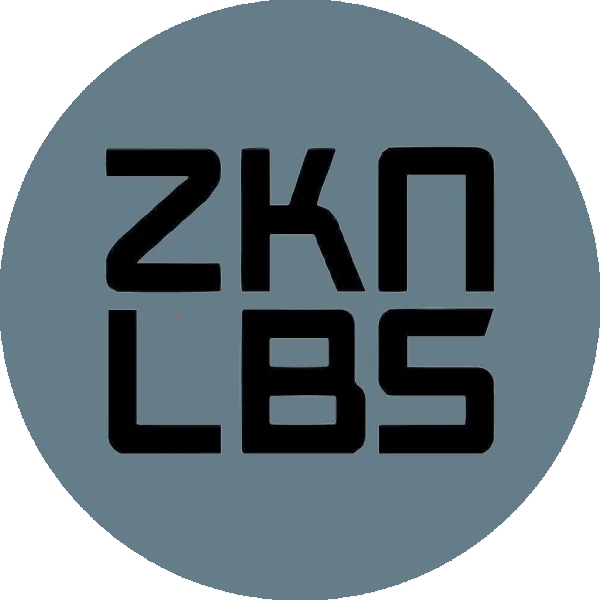Crypto holders should be familiar with Bitcoin wallets, but some new investors might have some difficulty understanding how the underlying technology works and how to check the balance on the blockchain. To perform a Bitcoin wallet check balance, copy your wallet's address, go to a blockchain explorer, paste it in the search bar, choose the BTC blockchain, and your balance will be shown. However, if you’re using Ledger, for example, this process could be more complex since it automatically creates a new address for every deposit you want to make, even if they are all part of the same account. When checking your Bitcoin Ledger wallet balance on the blockchain, you need to verify the account and not the single address, so you need to paste your xpub public key instead of the wallet address. In this PlasBit guide, we’ll also explore this process to ensure you’re able to verify your wallet balance with different types of wallet.
Understanding the Bitcoin Wallet Balance
Your Bitcoin wallet balance shows the total amount of BTC you currently own, and it’s the sum of all the in and out transactions associated with your crypto wallet. Checking your Bitcoin wallet balance is an easy process, but there could be some complexities if you’re using hardware wallets and you want to verify it on the blockchain. Some wallets, in fact, use only one address for all the deposits, ensuring simplicity but reducing privacy and security, such as, for example, paper wallets. Conversely, some wallets, such as Ledger hardware wallets, use multiple deposit addresses to ensure additional privacy and security, and, even if the addresses are all part of the main wallet, verifying your Bitcoin balance requires additional steps, which will be explained in the following guides. Remember to periodically verify your Bitcoin wallet balance regularly to ensure that you have sufficient funds for your transactions, to keep track of your digital assets, and to ensure you’re not a victim of hacking or address poisoning attacks.
Bitcoin Wallet Check Balance on Different Types of Wallet
Before explaining how to verify your BTC balance in your crypto wallet, let’s clarify which types of crypto wallets are available in the market. The two main categories are hot wallets and cold wallets, and, in most cases, it’s recommended to use both of them to enjoy the security of cold wallets and the accessibility and ease of use of hot wallets. However, if you’re not holding large amounts of cryptocurrencies, a hot wallet could be enough for you. Conversely, if you’re holding a large amount of Bitcoins and you do not need to perform frequent transactions, you could use only a cold wallet. The choice depends on your need: Are you a trader or want to use your crypto wallets for daily expenses? Then, choose a hot wallet. Are you a long-term hodler that mainly executes only deposits? Then go with a cold wallet. Now, let’s explore in detail all the subcategories of wallets, discuss their pros and cons, and verify how to check the balance on each wallet type mentioned above.
Hot Wallet (Online Wallets)
Hot wallets are crypto wallets that are always connected to the internet and provide a user-friendly interface and dashboard to manage your BTC holdings. They are the perfect choice for investors who need to perform frequent transactions or trades, and their main advantage is easy accessibility and simplicity of use. There are various types of hot wallets, and we’ll explore all of them and understand how to check your Bitcoin balance.
Software wallets
Software wallets like Metamask, Exodus, and Electrum are applications that you can install on computers and mobile phones, and they can be browser extensions or downloadable applications. The main characteristic is that they are always connected to the internet, conversely to cold wallets, ensuring easy accessibility and quick transactions, requiring only a password to get access and make a crypto transfer. If you are a trader or need to use a crypto wallet to make daily transactions, a software wallet is highly recommended, however, remember to store your long term holdings in a cold wallet (offline device), since software wallets are easy to use but have lower security compared to cold wallets. Evaluate the pros and cons before installing a software wallet because there are many types of them suited for different needs: DYOR (do your own research) and choose the best one that suits your requirements.
Exchange wallets
Exchange wallets are crypto wallets opened on centralized entities such as exchanges and crypto investment platforms. The security of these wallets relies on the infrastructure of the underlying organization, and these wallets have both pros and cons. One of the most significant advantages is the ease of use and the possibility of buying multiple cryptocurrencies on various blockchains from the same wallet. They also allow you to execute advanced trades, setting stop-losses, take-profits, and often also using leverage. However, you must consider that you’re entrusting other entities to store and preserve your crypto assets and the private key of your wallet. It could be considered a disadvantage for users looking for self-custody and maximum sovereignty over their own assets, but most exchanges nowadays implement high-security practices, and they are perfect for daily transactions, converting crypto-fiat currencies, and trade, even if it’s recommended to store your long-term holdings in a self custody cold wallet. But how do you verify the Bitcoin balance on hot wallets?
Step 1: Copy your BTC wallet address
The process of verifying your BTC balance on a hot wallet is quite easy. In this first step, log in to your hot wallet, select the Bitcoin network, and copy the address. If you’re using our PlasBit wallet, you can find your BTC address in the “Wallet” section under “Deposit”. After selecting the “Bitcoin” network, you can easily copy the address, as shown in the following image.
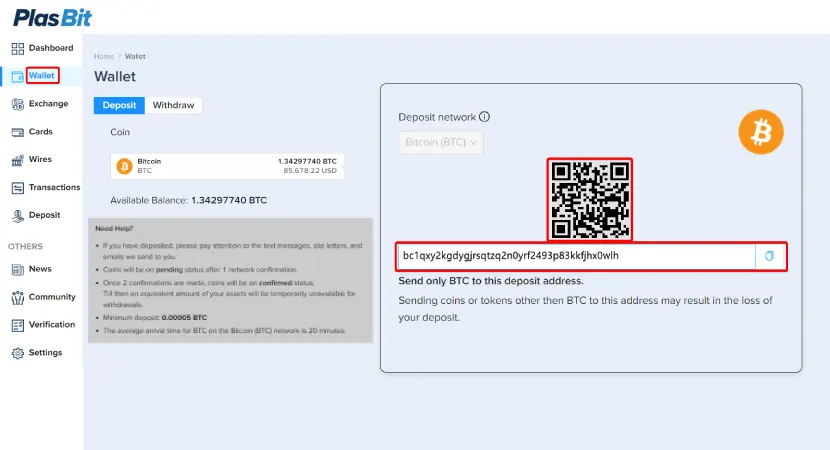
Step 2: Go to a blockchain explorer
After copying the address, go to a blockchain explorer such as blockchain.com or blockonomics.co. Go to the section with the search bar.
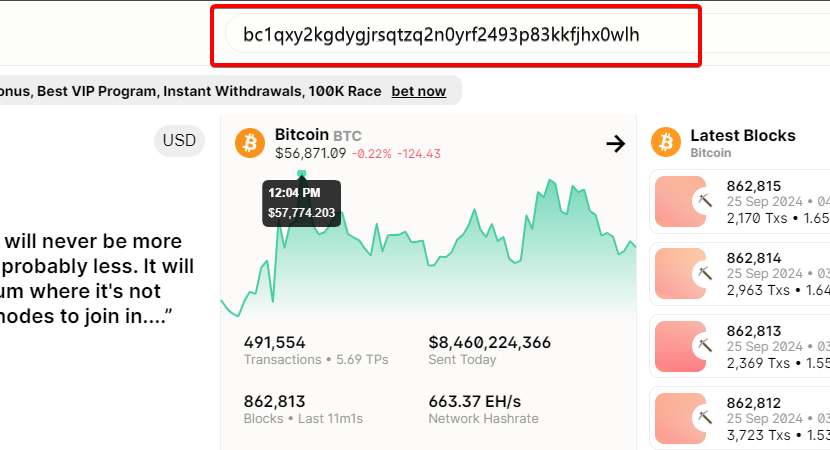
Step 3: Choose the BTC blockchain
Once you’re on the blockchain explorer, select the Bitcoin (BTC) network to select the specific blockchain associated with your funds and wallet address.
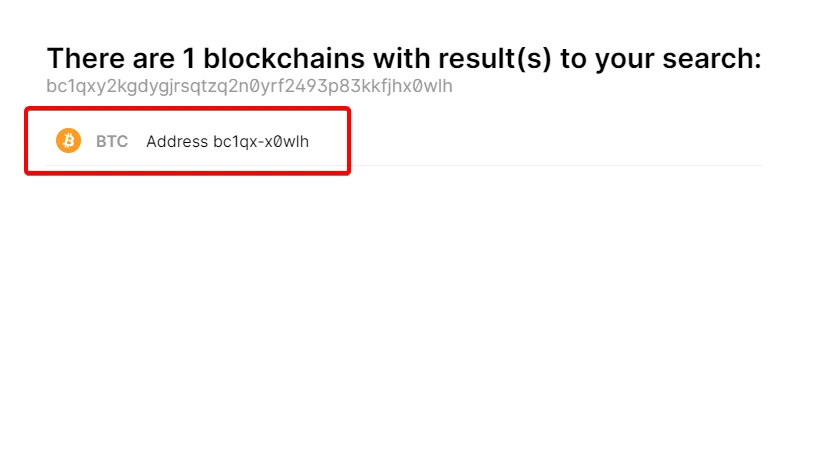
Step 4: Paste and search your address to read your current balance
Once you select the Bitcoin network, paste your wallet address into the search bar. Then, press enter to continue to verify your Bitcoin balance. Now, your Bitcoin balance will be shown, featuring the total amount of BTC held.
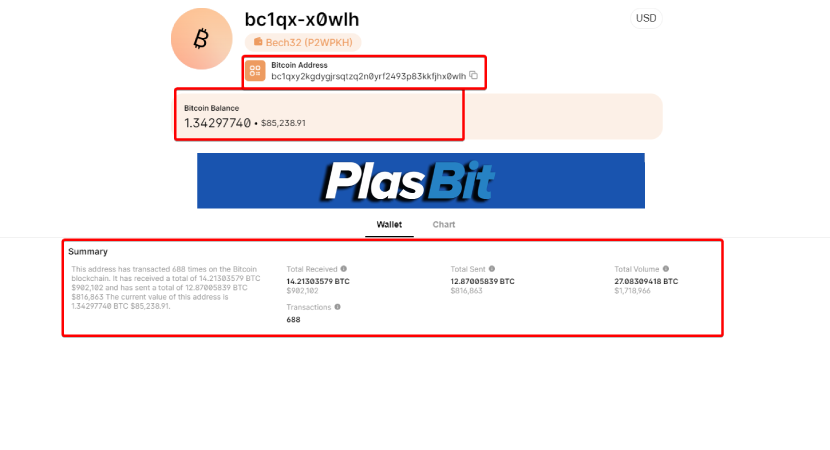
Cold Wallets (Offline Wallets)
Cold wallets are the most secure type of crypto wallets, but they are also less accessible and useful for quick daily transactions. Consequently, they are mostly used for storing long-term crypto holdings and not for daily expenses or trades. There are various types of cold wallets.
Hardware Wallet
Hardware wallets are physical devices that store private keys offline, ensuring your crypto assets are protected from online threats. The most popular options are Ledger and Trezor, which look like a USB pen drive that you can connect to the PC via a common type-C cable. Once connected to the pc, you can use their native software app to execute transactions and control your crypto holdings. Hardware wallets are the most common choices for long-term holders who don’t need to execute frequent transactions, and verifying the Bitcoin wallet check balance is quite easy and straightforward: You need only to open the software app and check it on the dashboard since the program automatically calculates it on the blockchain. However, some hardware wallet users can independently verify their crypto holdings on the blockchain. They might face some problems since, for example, the Ledger wallet address (zPub) is unique (extended public key (zPub) is the master public key of an account). Still, it creates a new address for every transaction for security and privacy measures. Let’s clarify how to check the Bitcoin balance on your Ledger wallet.
What is an xPub?
xPub is the master public key of your Ledger account, and it automatically includes and sums up all the various balances linked to it. To verify your Bitcoin balance on Ledger, in fact, you can’t just simply copy and paste your deposit address, because it is automatically generated and changes every deposit you made (even if they are all part of the xPub master public key). Consequently, you should have a good understanding of xPub before verifying your Bitcoin balance on the blockchain.
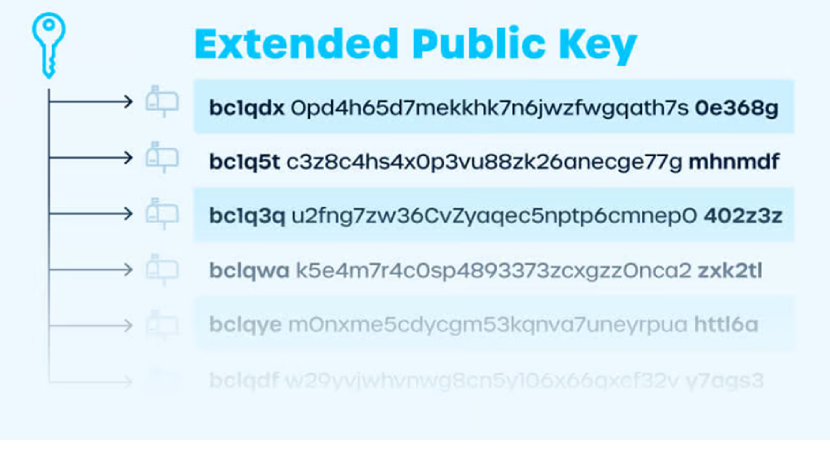
Step 1: Open your Bitcoin account on Ledger Live
Now that you’ve understood that xPub is your master key, let’s explain how to get it from xPub addresses (the addresses generated to deposit BTC on Ledger Live). First of all, open Ledger Live and click on “Account”, then select “Bitcoin”.

Step 2: How to get my xPub from Ledger?
Once you’re in the Bitcoin account on Ledger Live, click on the wrench icon.
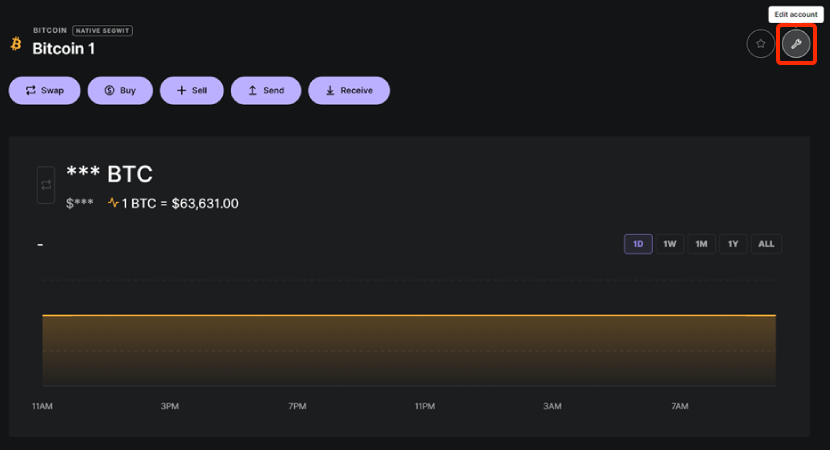
Step 3: Click on “Advanced” in the setting section
After clicking on the wrench icon, the app will open a new tab. Click on “Advanced” to show the xPub address that you will use to check your Bitcoin balance on the blockchain.
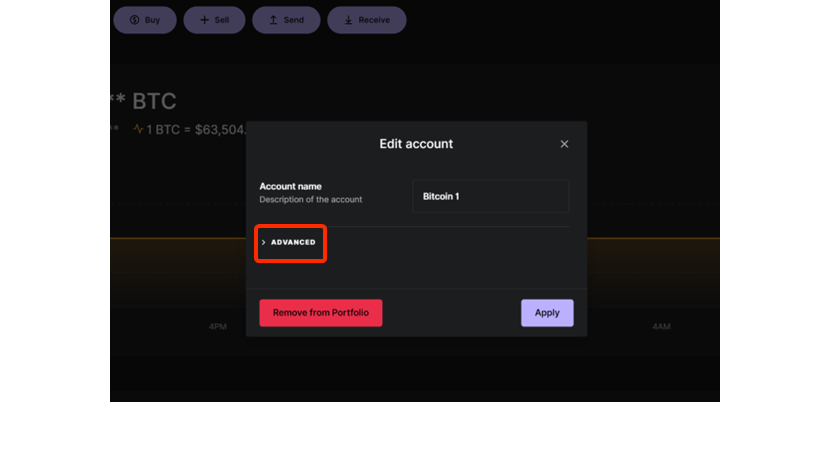
Step 4: Copy your xPub
Once you click on “advanced” in your Bitcoin account setting, your xPub will be revealed. Make sure to select only the characters inside the “ “ and copy it.

Step 5: Use Bitcoin Extended Public Key Converter to get zPub address
Once you copied your xPub address, you can use this popular Bitcoin Extended Public Key Converter to get the master public key of your Bitcoin Ledger wallet. Paste your xPub public key in the box and convert it into “Zpub (mainnet P2WSH)” to get the correct format of the wallet address that holds all your BTC assets.
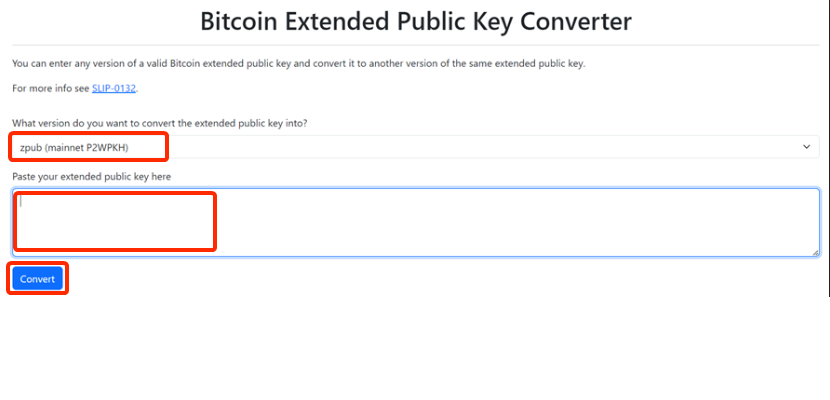
Step 6: Go on a Bitcoin Explorer and paste the address
Once you get the main wallet address from the converter in the previous step, you’re ready to perform your Bitcoin balance check on a blockchain explorer. Go to Blockonomics.co or Blockchain.com and paste the address in the search bar. Then, you’ll be able to check the total balance of your account, all the addresses linked to it, the total amount of transactions executed, and more interesting data. Mission completed!
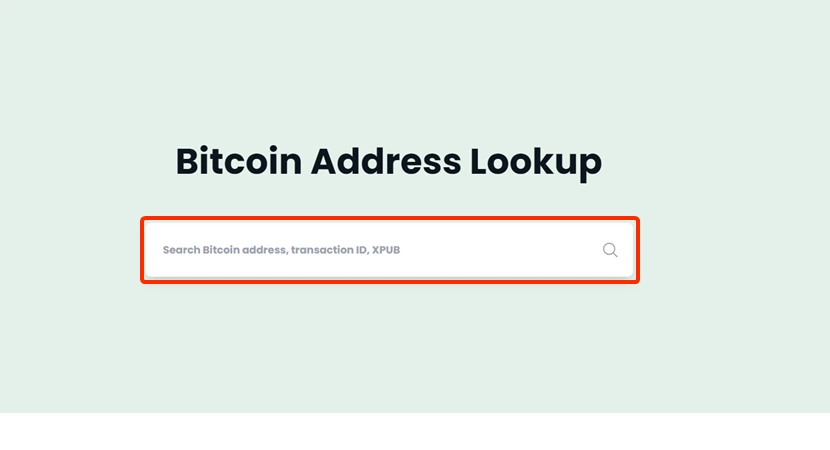
Paper Wallet
Even if paper wallets were considered one of the most secure choices for long-term holdings, they have both pros and cons. Paper wallets are basically created on websites like bitaddress.com that generate a random private and public key to create a new wallet. Then, you should keep the private key offline, store it in a secure place, and use the public key to make deposits and control the balance. As with other types of wallets, you must transcript your private key on a (preferably) metal card and hide it in a secure place. It should make the wallet inherently secure since the private key is offline, as is the case with hardware wallets. However, the downside is that generating the wallet online is inherently insecure because you can’t trust a computer or a website to generate a random number for you (since you could have a virus on your pc or the website could create a copy of your key). Additionally, to perform a transaction, you should insert the private key in another hot or cold wallet, and at this point, you basically entrust your funds to another entity (the wallet provider). If that’s not all, the user experience of hardware wallets is usually much better than that of paper wallet’ providers, and consequently, you would overcomplicate things when you can use simple and secure solutions. One last factor to consider is that a paper wallet has only a single receiving address, making it less privacy- and security-focused than a hardware wallet. However, verifying the balance of your Bitcoin paper wallet is very easy since you have just one address: Copy and paste it into a blockchain explorer and verify the balance.
Securing Your Bitcoin Wallet Balance: Best Practices for Maximum Protection
Cryptocurrency, especially Bitcoin, can guarantee a new, unprecedented form of financial freedom, allowing people to gain full sovereignty over their own assets, making them free from banks and government control. However, this freedom requires that people implement effective security measures to protect their BTC holdings, preventing them from being victims of hacks and scams or losing access to their crypto holdings. You must implement the best security practices to secure your wallet or Bitcoin freewallet that we have identified at PlasBit.
Use a Strong, Unique Password or Passphrase
The first rule to prevent brute force attacks and other common types of password hacks is to create a solid, unique, and complex password or seed phrase associated with your Bitcoin wallet. It must include at least 12 characters, combining upper and lowercase letters, numbers, and symbols. On the other hand, a passphrase combines multiple words that are simple to remember but difficult to guess. A complex password or passphrase will make it difficult for hackers or unauthorized persons to access your wallet.
Enable Two-Factor Authentication (2FA)
Two-factor authentication (2FA) is essential to protect your crypto wallets since it’s an additional security process that requires you to submit a second verification before accessing your wallet. This verification will often be a text message on your mobile phone or a unique code on a secure authentication app such as Google Authenticator. By enabling two-factor authentication, you make it almost impossible for hackers to access your wallet without gaining access to two of your devices simultaneously, even if they have your password.
Keep Your Wallet Software Up to Date
Remember to update your wallet software to ensure you have the latest security patches and bug fixes. In fact, in most hacks, scammers exploit vulnerabilities of previous software versions that are usually fixed in recent updates. Make sure to always have the latest version of the software to make it harder for hackers to exploit the software’s vulnerabilities. It will also improve your wallet's functionality and user experience when you check your Bitcoin balance.
Make Regular Backups of Your Wallet
Execute frequent backups of your wallet to ensure you can gain access to your crypto holdings even in case of device failure or loss. Store your backup in an offline USB pen, hard disk, or a paper wallet (better if it’s in the form of a metal card). Make sure to periodically verify the effectiveness and conservation of your backup because it’s quite common to lose it, which makes it impossible to gain access to your wallet and permanently lose your crypto holdings. Store the backup in a secret, secure place, and don’t make it accessible from an internet connection to ensure advanced protection from hacks.
Store Your Backup and Recovery Information in a Secure Location
Your seed phrase or credentials backup is the ultimate key to accessing your wallets and crypto holdings. Consequently, its storage is one of the most important factors in ensuring you protect your crypto holdings effectively. This place can be a safe deposit box, a secure cloud storage service, or a fireproof safe. Again, keeping your backup and recovery information separate from your wallet is essential to prevent unauthorized access. At PlasBit, we believe that prevention is nearly always better than the cure, so take the necessary measures to secure your wallet. Advanced protection could be possible by dividing the seed phrase into two or more different places, but it also requires additional attention to not lose them.
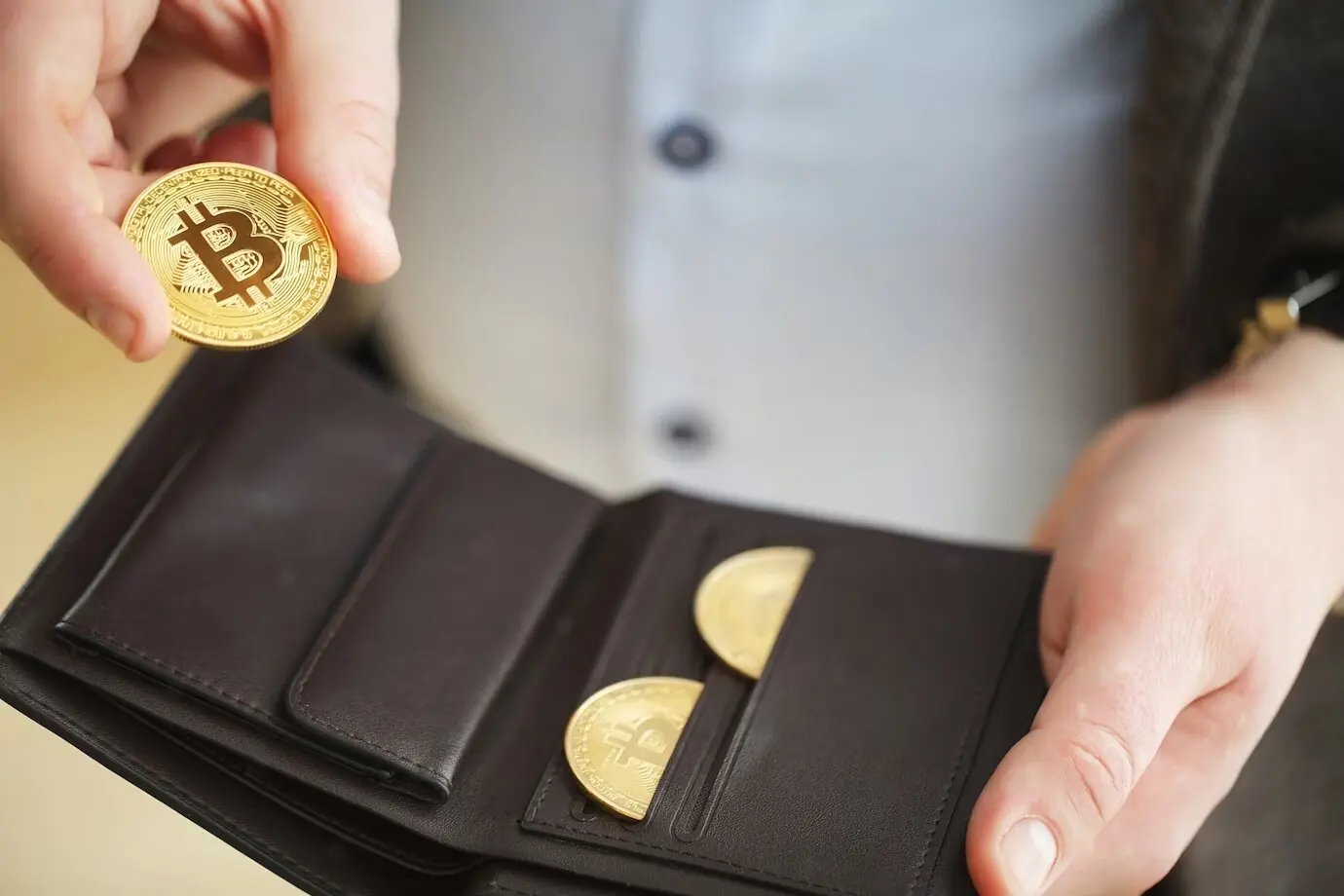
Performing a Periodic Check of Your Bitcoin Balance
Some people, like traders, have the necessity to check their Bitcoin balance daily to verify the performance of their trades and the impact on the overall portfolio, while other people, like long term holders, can have the necessity to check their balance only once in a while. However, it’s a best practice to check it regularly (at least once a week) to ensure that you’re not a victim of a hacker attack and that your assets are safe.
Helps You Manage Your Finances Better
By regularly checking your BTC balance, if trading daily, you can have a clear overview of the efficacy of your trading strategy, verifying daily profits or losses. Instead, if you’re using a hot wallet for daily transactions, you can monitor your spending patterns and reduce unnecessary expenses, both to increase your wallet’s health and to ensure you’ve always sufficient funds for unexpected expenses. Planning and controlling your financial health is very important to reach your financial freedom.
Detect Unauthorized Transactions or Security Breaches
We highly recommend checking your Bitcoin balance also to verify if you’re a victim of a security breach or a scam attempt, such as an address poisoning attack, for example. If you notice some suspicious transactions in your wallet, your crypto wallet could be hacked, and you should take security measures to move your funds to other safe wallets. Verifying periodically your transactions can help you to identify risks and act accordingly.
Provides a Clearer Understanding of Your Overall Financial Position
Monitoring your holdings with a periodic wallet balance check also gives you a clearer view of your financial position. It lets you track your investments, spending habits, and income sources, clearly showing your financial health. This activity, in turn, helps you make informed decisions about your investments and spending habits.
Helps You Stay Ahead of Market Trends
The crypto market is highly volatile compared to traditional financial markets, with prices of crypto assets fluctuating rapidly and suddenly. If you are a short or medium-term trader, for example, by monitoring your Bitcoin wallet balance, you can stay agile in responding to market trends and making informed decisions about buying or selling your cryptocurrencies at the right time.
Helps You Prepare for Tax Season
As a crypto investor, even if the market is not fully regulated yet, you should keep track of your transactions and trades to report them during tax season, avoiding headaches and preventing fines and penalties. Monitor your Bitcoin wallet balance regularly to track your transactions and have all the necessary information to report your taxes accurately. It can help you manage your finances better, detect unauthorized transactions or security breaches, better understand your overall financial position, help you stay ahead of market trends, and prepare you for tax season. It is, therefore, best to make it a habit to check your Bitcoin wallet balance regularly. For example, using PlasBit, you can keep track of all of your transactions via a single user interface. This analysis includes crypto debit card payments and money transfers.
Ensuring Peace of Mind with BTC Wallet Best Security Practices
In conclusion, at PlasBit, we want to emphasize once again the importance of adopting the best security practices to have peace of mind and reduce the risks of hacks on your Bitcoin wallet. The most common way people lose money on crypto is through social engineering attacks or losing their seed phrases and private keys. Be sure to implement the best practices, stay ahead of trends, and avoid being a victim of hacks or scams. Leverage also the community support and information through popular community networks such as Reddit, Quora, Twitter, and more: If you have a specific question about crypto security and best practices, feel free to ask a community of crypto experts who will be glad to help you in solving your doubts and problems. However, be aware that people who write you in DM are always scammers trying to scam you via social engineering attacks, as happened recently with this remarkable $230 million cryptocurrency scam. With dedication and persistence, you can become an expert in cryptocurrency, stay ahead of trends, become a profitable investor, effectively routinely check your Bitcoin balance, and enjoy the many benefits crypto offers.



